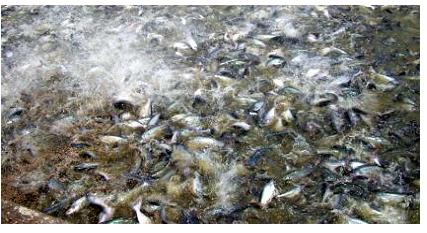News
Belize Paradise Shrimp’s Trials with Penaeus monodon
On May 8, 2014, Hank Bauman (hankbauman@gmail.com), hatchery and broodstock manager at Paradise Shrimp Farm in Dangriga, Belize, reported that he had spawned “Caribbean” tiger shrimp (Penaeus monodon) and produced postlarvae..
More recently, on the Shrimp List, Bauman reported:
I would guess that the Caribbean monodon we are now catching and breeding have to be inbred. Their ancestors probably escaped from one or two ponds in the Carolinas (USA) or Brazil in the 1980s? Those animals could have all come from one or two females. I would guess they were mostly brothers and sisters mating in the wild. Perhaps the eight females that we spawned were sisters. Who knows?
I’m no geneticist, but why is it bad to inbreed in captivity and not in the wild? Or is it, in fact, just as bad in the wild? Is there a difference? Wild would seem to select for fast growth since being little means one is more likely to get eaten.
We now have a breeding population of monodon at our farm. If we bring in more animals from the wild to maintain diversity, they’re likely to be close relatives of what we already have.

In our first test pond, stocked at five per square meter, we had the fastest growth I have ever seen. The monodon grew from 6 grams to 25 grams in about 28 days, almost three grams a week!
We’re still working in on growout techniques for the monodon, but our maturation and hatchery techniques are working well.
Source: shrimpnews



 Tiếng Việt
Tiếng Việt